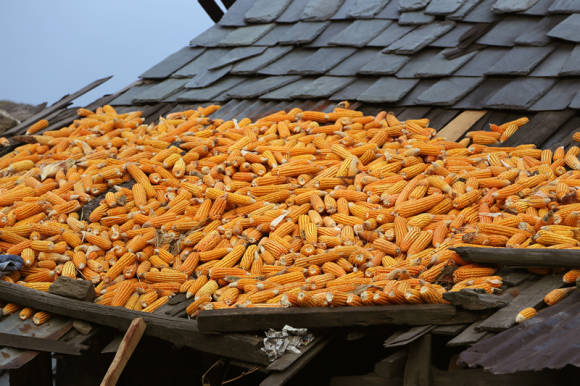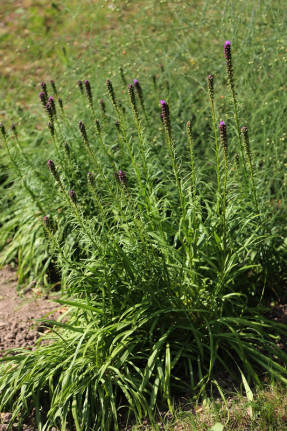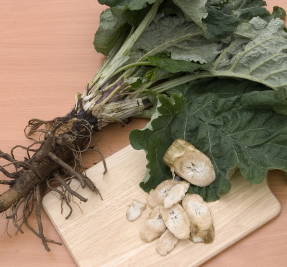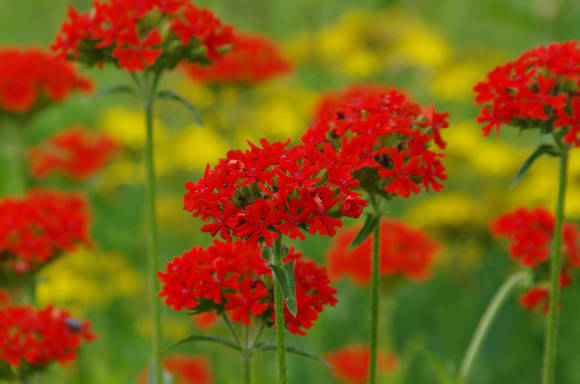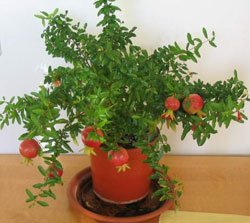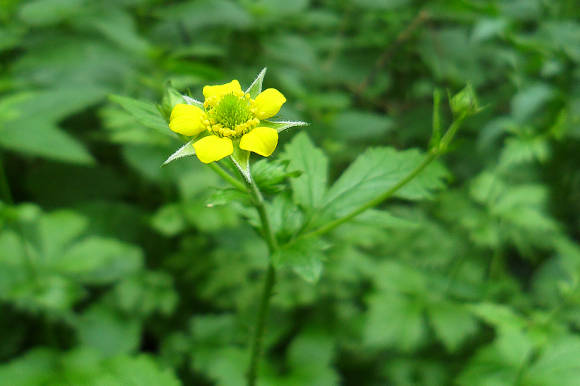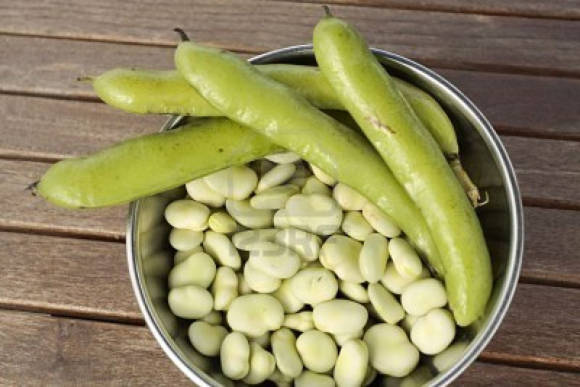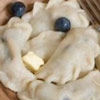
Zamaniha high(Oplopanax elatus) - the plant is rare, and there are several reasons for this: firstly, it initially has a rather small area, secondly, it is picky about growing conditions and needs shading, and thirdly, its seed reproduction is difficult, which is associated with the underdevelopment of the embryo and deep physiological dormancy of seeds.
But the more interesting it is to grow it on your site. I want to reassure you right away - in the middle lane it grows pretty well. The biggest enemy for her is late spring frosts, which damage the young blossoming leaves and the growth point of the young shoot. In this year, the bait does not bloom and, accordingly, does not bear fruit. If frosts are repeated for several years in a row, then this can weaken the plant so much that it will die. However, given the relatively small habitus, it is quite possible to cover the plant with agril. Winter frosts and even frequent thaws in our area in recent years do not have a negative impact on her.
The second unfavorable factor for lure is direct sunlight. Therefore, it is better to choose a place for planting it under the trees.
Breeding zamanihi
The next difficulty in growing bait is that it does not take root under the conditions of culture by lodging shoots and therefore does not form thickets characteristic of the Far East. Accordingly, there are two options for its propagation in culture: by semi-lignified cuttings with preliminary treatment of the cut cuttings in an IMC solution (100 mg / l for 6 hours), or by seeds.

In the first case, cuttings are cut at the end of July 10-12 cm long, cutting obliquely under the leaf trail. The leaf blade is reduced by half. This should be done in cloudy and cool weather. Cuttings treated with a growth regulator are planted in a greenhouse or greenhouse. The main care consists in regular watering and resembles that when rooting fruit crops. By autumn, the cuttings will take root. They are left to winter in the same greenhouse, covered with peat and foliage. In early spring, they open and the most developed are transplanted to a permanent place. After 3-4 years, young plants begin to bear fruit.
Seed propagation is longer and more laborious. In nature, it usually takes 2 years. But in culture, everything can be done faster. It should be remembered that the seeds extracted from the fruit are practically not stored - they dry out quickly and lose their germination.

So, the seeds freshly washed from the pulp are treated with potassium permanganate and mixed with coarse river sand or, even better, coarsely crushed sphagnum in a ratio of 1: 3.
The first stage of stratification, the so-called warm stratification, is carried out for 4 months, from August to December at a temperature of 18-20 ° C and free access of air and moisture (but not overmoistening!). During this period, the development of the embryo takes place and, as a result, by the end of this stage, the seeds are pecked.
The next stage, cold stratification, is carried out at a temperature of + 2 + 5 ° C from January to April, that is, also 4 months. In early May, prepared seeds are sown in a mixture of 2/3 peat and 1/3 sand. It is better to do this in boxes or pots, so it is more convenient to care for young plants. From above, it is better to mulch the crops with sphagnum cut with moss.
Seed germination usually does not exceed 60%; even a small part of the seedlings dies later. After the emergence of shoots, the pot or box is taken out into the street and buried in a shady place. It is important not to forget to water the crops. Young baits develop very slowly and only after 2-3 years can they be planted in a permanent place, which must also be shaded. Before planting, prepare the soil and add 1 bucket of high-moor peat, ½ bucket of wood humus (rotted sawdust, foliage, shavings) and 1/3 bucket of sand to the planting pit.All this is thoroughly mixed before planting and spilled with water. It is better that the seat is not level, but raised by 15-20 cm by such a mound. The distance between plants is not less than 1 m. Freshly planted plants are mulched with fallen needles or sawdust. Further, the plants grow for a very long time too.
So it was not in vain that the plant appeared in the Red Book, especially considering that rhizomes and roots are its medicinal raw materials.
The chemical composition of medicinal raw materials zamanihi
The rhizomes and roots of zamaniha are quite aromatic and contain about 2.7% of essential oil, 11.5% of resinous substances, 0.2% of coumarins, 0.9% of flavonoids. But the main wealth of the bait is triterpene saponins, the so-called echinacosides, of which there may be more than 6%. They got their name from the old Latin name of the plant - echinopanax. They determine the biological activity of raw materials. But in few places they write that the chemical composition, and, accordingly, the medicinal properties of the aboveground part are close to those of the roots, only the content of all valuable substances is somewhat lower, as if diluted. However, it is quite possible to apply in the same way as the roots.
Medicinal use of zamanihi
Lure is used mainly in the form alcohol tincture, which is prepared from roots and rhizomes in 70% alcohol in a ratio of 1: 5. Insist crushed raw materials for two weeks in a dark place, shaking occasionally. Take 30-40 drops 2-3 times a day before meals.
If you prepare a tincture from the aerial parts, then you can simply increase the proportion of raw materials when insisting and take, for example, the dry aerial part in a ratio of 1: 3 with the same 70% alcohol.

According to its application, zamaniha belongs to the group of classic adaptogens and is used similarly to ginseng, aralia, eleutherococcus, rhodiola or leuzea. But still, each of the listed plants has its specificity. There are certain features of the lure. Zamaniha has a tonic effect, increases physical activity and physical endurance, it is prescribed for hypotension, post-infectious and post-traumatic asthenia. Zamanihi tincture is used as a tonic for asthenia, hypotension and depressive conditions. It turned out to be effective for patients with neurotic syndrome with sluggish schizophrenia and depressive psychosis, as well as for post-traumatic encephalopathies.
Zamanihu is also used for milder forms of diabetes, as it lowers blood sugar and increases physical activity, preventing excess weight.
Tincture of zamanihi is prescribed for women in the climacteric period, accompanied by neuroses and increased irritability, sleep disturbances, general fatigue, apathy, and a sharp change in mood. And for men, a lure is recommended as a tonic that stimulates sexual activity.
But, like any medicine, it has restrictions on its use. Be careful to use the lure for people with high blood pressure and tachycardia, and in case of insomnia, refrain from taking the tincture at night.
Photo by the author
